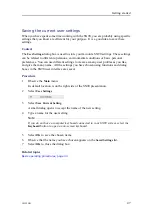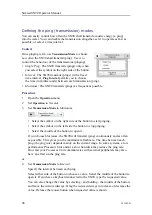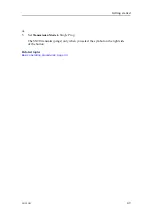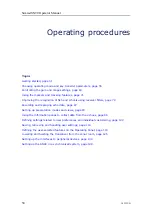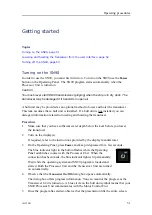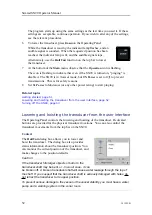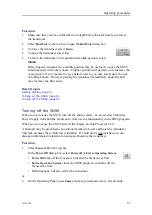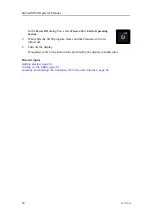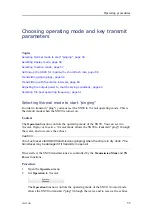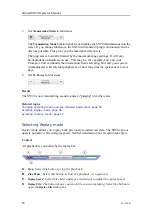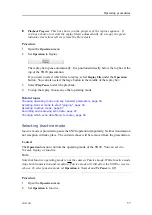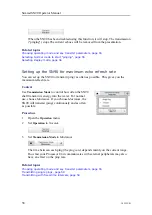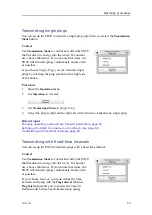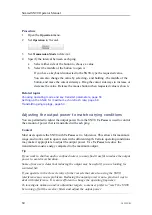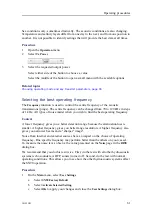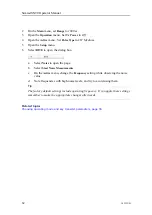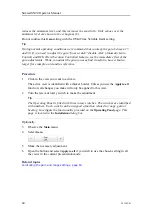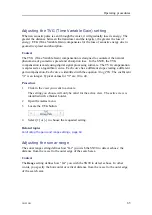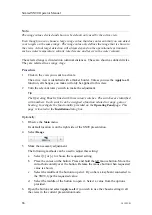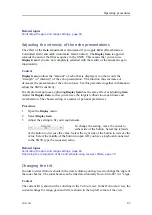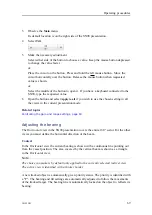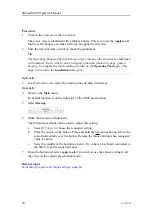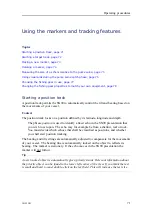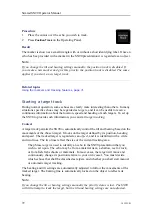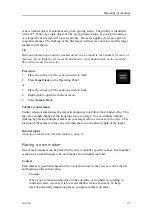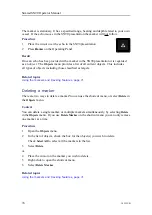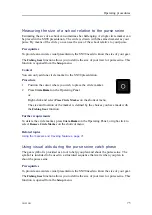
381295/B
61
Sea conditions vary, sometimes drastically. The acoustic conditions are also changing.
Temperature and salinity layers differ from one day to the next, and from one position to
another. It is not possible to identify settings that will provide the best data at all times.
Procedure
1
Open the
Operation
menu.
2
Select
Tx Power
.
3
Select the requested output power.
Select either side of the button to choose a value.
Select the middle of the button to open a small menu with the available options.
Related topics
Choosing operating mode and key transmit parameters, page 55
Selecting the best operating frequency
The
Frequency
function is used to control the centre frequency of the acoustic
transmissions (pings). The centre frequency can be changed from 70 to 120 kHz in steps
of 1 kHz. All types of noise matter when you wish to find the best operating frequency.
Context
A lower frequency gives you a better detection range because the attenuation loss is
smaller. A higher frequency gives you better range resolution. A higher frequency also
gives you narrower beams and a "sharper" image".
Noise from internal and external sources have an impact on the choice of operating
frequency. One specific frequency may perform better than the others on your vessel.
To measure the noise level, observe the value presented on the
Noise
page in the
BITE
dialog box.
We recommend that you do this test twice. First, do the test with all other hydroacoustic
systems (echo sounders, ADCP, sonars) turned off. Second, do the test with normal
operating conditions. This allows you to see how the other hydroacoustic systems affect
the SN90 operation.
Procedure
1
On the
Main
menu, select
User Settings
.
a
Select
SN90 Factory Default
.
b
Select
Activate Selected Setting
.
c
Select
OK
to apply your changes and close the
User Settings
dialog box.
Summary of Contents for SN90
Page 2: ......
Page 186: ... 2020 Kongsberg Maritime ...
Page 187: ......
Page 188: ...Simrad SN90 Purse Seine and Trawling sonar Operator Manual ...

